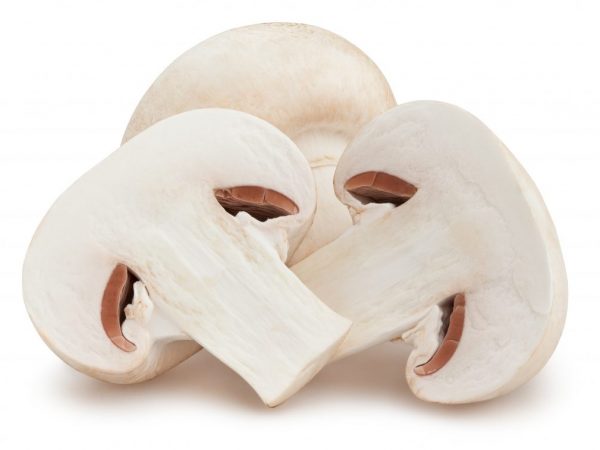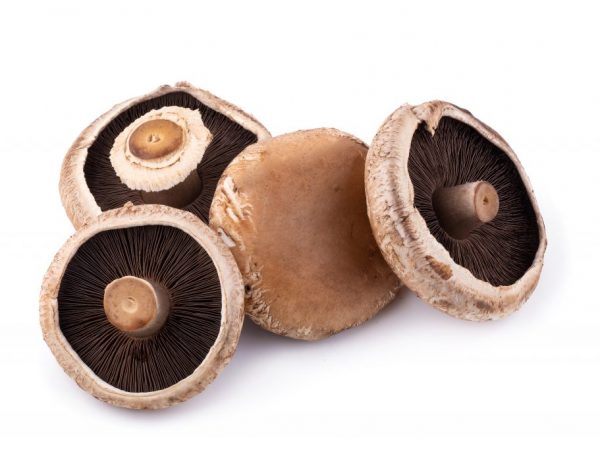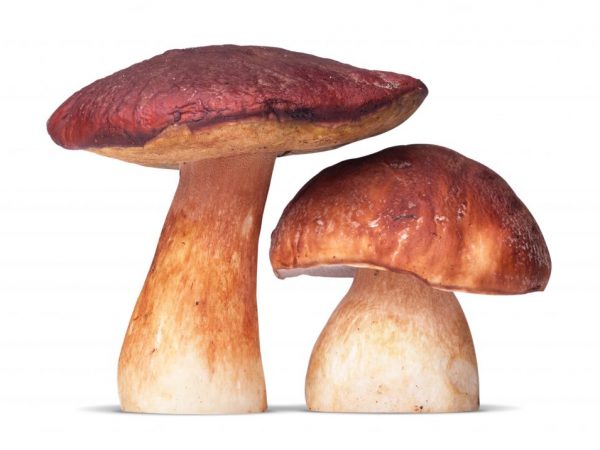What is the fruiting body of the fungus
For a mushroom picker, you need to know the structure of mushrooms. This will help distinguish edible from inedible species. The fruiting body of the fungus is formed by intertwining mycelium hyphae - thin and tightly fitting filaments. In the specialized part, spores are formed as a result of the sexual process. It has different sizes and shapes.

The fruiting body of the fungus
General structure
The mushroom kingdom is huge. Its representatives often differ significantly among themselves. Most of the known species belong to the order Agaricaceae. This includes mushrooms, chanterelles, mushrooms, mushrooms and others.
The body of the fungus consists of hyphae. Translated from Greek, this term means "web", "fabric". These filaments are formed by cells with strong walls. They are characterized by apical growth. Branched, may not have septa and often consist of one large cell with nuclei (in the lower ones).
Vegetative part
Hyphae, placed under the substrate, deliver nutrients to the body. They grow on the ground, dead or living wood. Sometimes they parasitize plants and animals. The vegetative body of the fungus is called mycelium, or mycelium, but not the root. It is the main part of the body.
Irina Selyutina (Biologist):
Indeed, the hyphae, from which the mycelium is formed, have apical growth and branch abundantly. Their "branches" are the younger, the closer they are to the growing top. During the formation of sporulation organs, and often in vegetative organs, mushroom filaments are tightly intertwined and form plectenchyma.
The parallel connection of hyphae forms mycelial strands, which are very clearly visible at the base of large fruiting bodies. Water and nutrients flow through them.
Often branched hyphae, meeting with small tree roots, entwine them like a cover. Sometimes they penetrate into their cells and form tangle of hyphae there. Swelling and root ramifications appear. This symbiosis of the body of the fungus with the plant is called mycorrhiza or fungal root: thanks to this, fungi receive glucose from plants, and plants do not need water and minerals.
Fruit part
Representatives of the mushroom kingdom reproduce in 2 ways:
- vegetatively - pieces of mycelium;
- with the help of spores - asexual and hollow process.
The fruiting body of the fungus is the reproductive part, scientifically called sporocarp or carpophore.
It is formed by some specimens during the sporulation period. Consists of intertwined threads that form the pulp - the actual body weight. This is a false tissue called plectenchyme. The function of a separate part of it is the formation of disputes. To see them, the hat is laid on a sheet of paper. After a while, a gray coating will appear on it - this is the dispute. When placed in a favorable environment, they germinate. A mycelium is formed, and over time, a mushroom.
Irina Selyutina (Biologist):
Plectenchyma, or false parenchyma, differs from real tissue in its origin.False tissue of fungi is formed by interlacing filaments of mycelium, while in higher plants tissues are formed by cell division in all directions. Under the microscope, plectenchyma often resembles an ordinary parenchyma (the main tissue of plants), and sometimes even differentiation, covering, conducting, etc., may be present in it.
The fruiting body of ascomycete fungi is called ascocarp or ascoma. Basidiomycetes have basidiocarp or basidioma.
Types of fruit bodies
Representatives of the mushroom kingdom have different shapes.
In many sources, there is a division into groups:
- hats;
- sedentary - in the form of growths, hooves, console-shaped (they do not have a leg, or a stump, hence the name);
- rounded, pear-shaped, etc.;
- prostrate, lobed, coral, ear, star, etc.
The shape of the fruiting body of the fungus can change during growth. There are species that look like a star, acquire a phallus or lobed resemblance.
The structure of the fruiting body
Mushrooms are divided into lower and higher in terms of structural features. The first group includes mold species. Their spores are always in the air and, under favorable conditions, begin to multiply. Many representatives are present in soil and manure. Hyphae appear on bread, plant products. They entwine them like a spider web. Spores form in sporangia that form at the ends of the hyphae.
In most cases, in agaric mushrooms, the fruiting body of the mushroom consists of a cap and a leg. They come in a variety of colors and sizes. But in some specimens, these organs are poorly expressed or completely absent.
Hat

The skin does not allow moisture to evaporate from the body of the fungus
Its components, like those of the vegetative bodies of fungi, are hyphae. The surface of the cap is formed by opaque threads - this is the skin. Its function is to prevent moisture from evaporating from the inner tissues. It can be dry or slimy, depending on the weather. In many species it is easily separated from the pulp over the entire surface, in others it can only be removed from the edges. There are specimens with firmly attached skin.
The pulp of this part of the mushroom's body is sterile tissue. It can be loose or elastic. In many species, it is brittle. Has a different smell: light, pleasant or sharp, burning. In most cases, the color is light. May change with age. Stays the same when cut or gets darker. In many specimens, some of the hyphae have thickened walls. Inside they have juice, which is often called milky juice. In some representatives, it is present in abundant quantities, in others, in a small amount. It can be colorless or colored.
The shape of the hats is different:
- cushion;
- spherical;
- funnel-shaped;
- bell-shaped, etc.
Edges can be folded up or down. Some specimens change the shape of the cap throughout their entire life cycle.
Depending on the type of hymenophore located in this part of the fruiting body, the mushroom is called:
- Lamellar: the lower part of the cap is represented by plates. These include, for example, a flywheel, boletus, oiler.
- Tubular: the hymenophore is represented by tubules. The group includes such mushrooms as camelina, champignons, autumn mushrooms.
- Marsupial: has a cellular or convoluted surface. The group includes truffle, morel, ordinary line.
Hymenophore
It is a part of the structure of the fruiting body of the cap fungus. This education is a sign of high organization. Instances with a hymenophore have a thin spore-bearing layer on their surface - hymenium. It consists of microscopic cells - basidia. In the first case, it grows together with the leg, in the second, it does not reach it. Sometimes it runs down (falls) along it. Can be easily detached from the cap or attached tightly.
Types of hymenophore:
- smooth;
- folded;
- prickly;
- tubular;
- labyrinthine;
- lamellar.
It is of great importance for the breeding process.When fertile cells are scattered from the hymenium, a new vegetative body of the fungus is formed under the appropriate environmental conditions.
Controversy
Spores are visible only with a microscope. Composition:
- cytoplasm;
- the shell is smooth, prickly, bristly or warty;
- core;
- other organelles.
Dimensions are 10-25 microns. The shape is varied: round, oval, granular, star-shaped, in the form of a spindle. In the external environment, they look like a powder, therefore in mycology there is a special term - spore powder. They are transparent or colored. Mycologists attach great importance to these characteristics, because they help to accurately determine the species of the specimen.
Leg

The leg serves as a support for the mushroom
The leg (stump), like the cap, is a part (organ) of the fruiting body of the fungus. It acts as a support, so hyphae are made up of huge, strong cells. They are distinguished by a characteristic thickened shell. Hyphae are located from bottom to top, collected in bunches and placed in parallel. Serve to deliver water and nutrients from the vegetative body of the fungus to the cap.
Legs are of the following types:
- hollow;
- solid;
- mixed - the outer part is dense, the inner part is spongy.
They also differ in shape and thickness. They are cylindrical, obtublava-shaped. Sometimes they expand towards the base. Then formations appear - bulbous swellings. This shape is inherent in overall views. Mushrooms with a vegetative body in wood often (but not always) have an elongated stem. It tapers towards the base.
Common signs of this organ also include:
- position relative to the cap - central, eccentric, lateral;
- connection with a hat - without a clear border and with a weak fastening;
- differences between its consistency and the consistency of the cap.
The surface of this part of the fruiting body of the fungus is smooth, velvety, reticulate, furrowed, with scales, which is well defined visually and tactilely. It sometimes alternates between light and dark zones. Distinguish between mucous and dry legs. These traits are subject to variability associated with both life cycle and environmental conditions.
Common bedspread
Not present in all species. When the terrestrial portion is formed, it has a whitish shell. With the growth of the fruiting body of the fungus, it remains on the cap in the form of pieces. On the basis of the hemp, a volva is formed, which is free or adherent.
Private bedspread
In many specimens, membranous belts or "skirts" are also noticeable on the leg. They are clearly visible in young organisms. Thanks to this particular veil, a protective layer of the hymenophore is formed. Only when the spores mature does this film break down and they are released into the environment. Therefore, the presence of a continuous private coverlet on the underside of the cap makes it possible to judge with confidence about the age of the fungus.
Conclusion
The appearance of the fruiting body of the fungus is a leg, a cap and a hymenium located under it. A huge number of spores are formed in it, which are located on the surface or inside specialized formations of the hymenophore. They are carried by wind or animals over long distances.
The vegetative body of fungi consists of long thin filaments. The mycelium grows under or on the substrate. The branching hyphae spread rapidly and join together at specific locations over time. A "knot" is formed, giving rise to a new representative of the mushroom kingdom.



